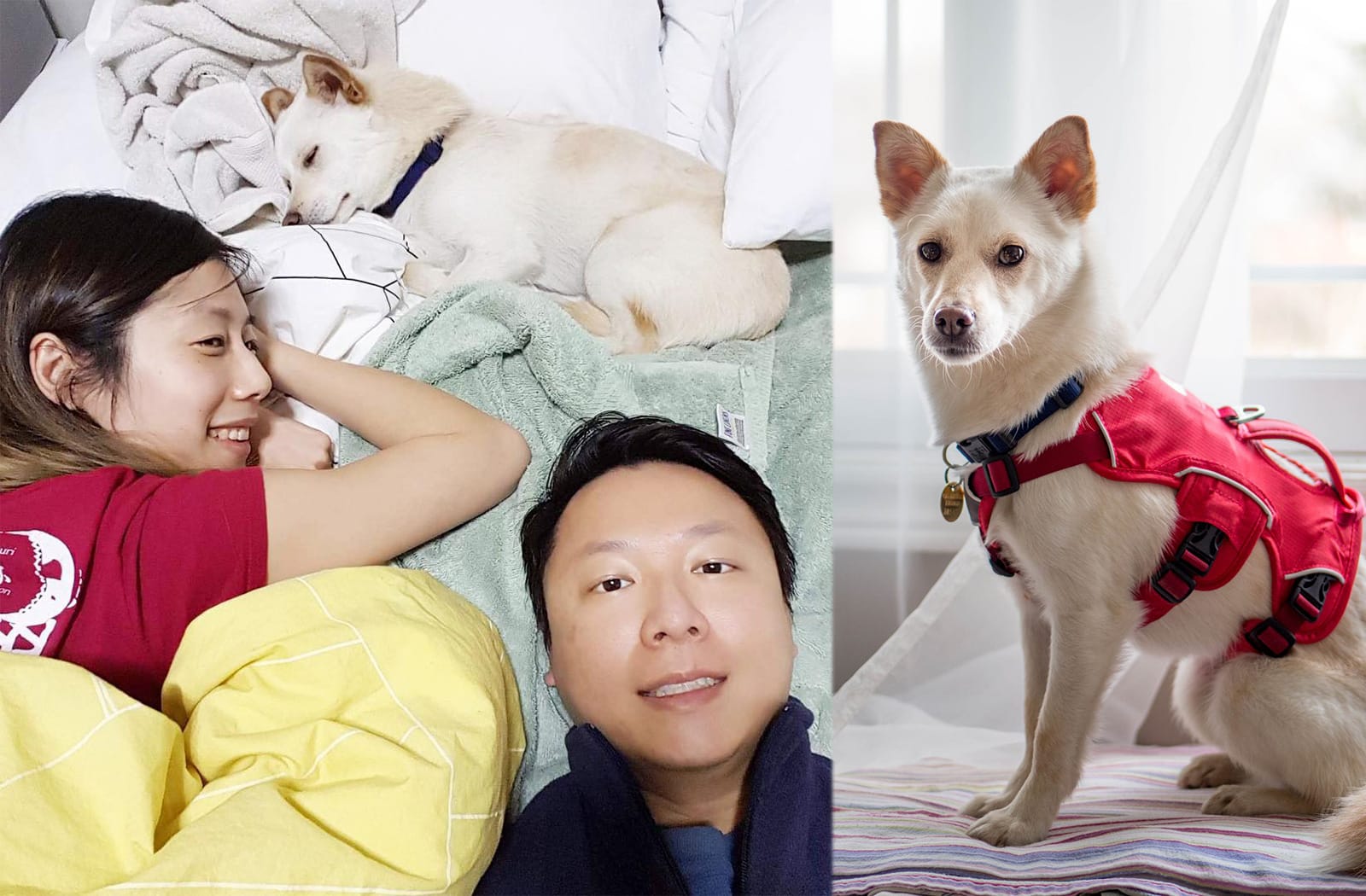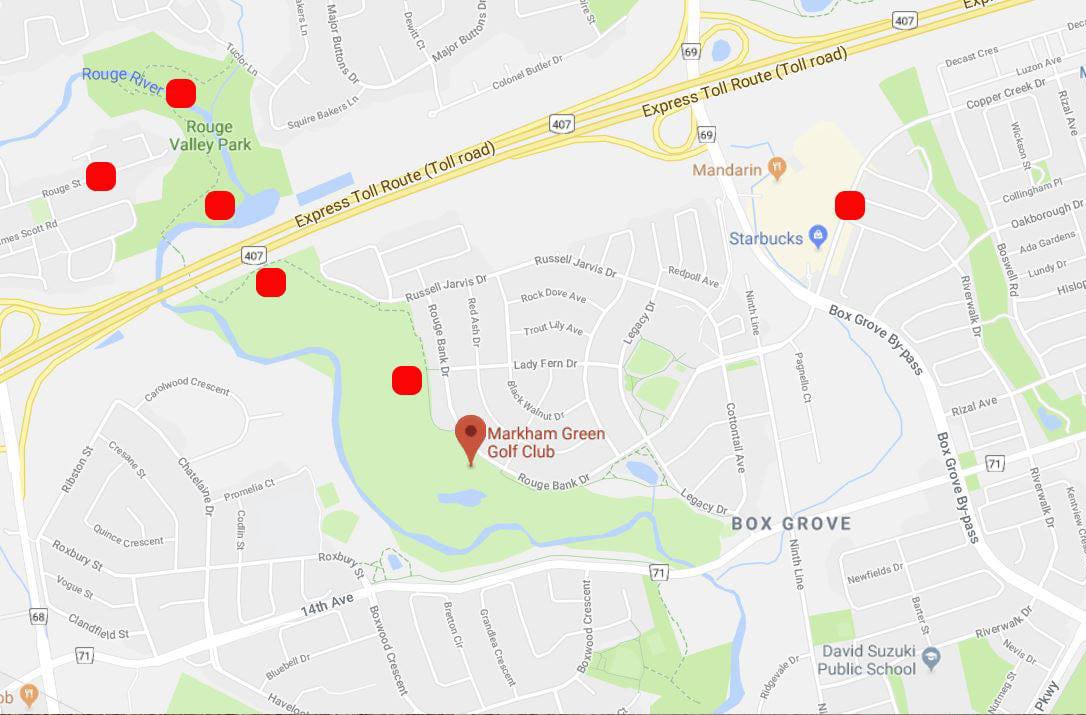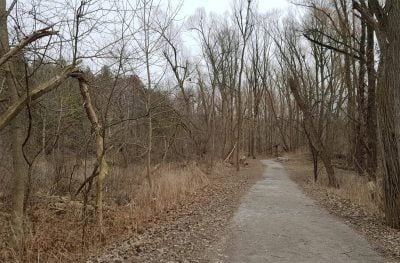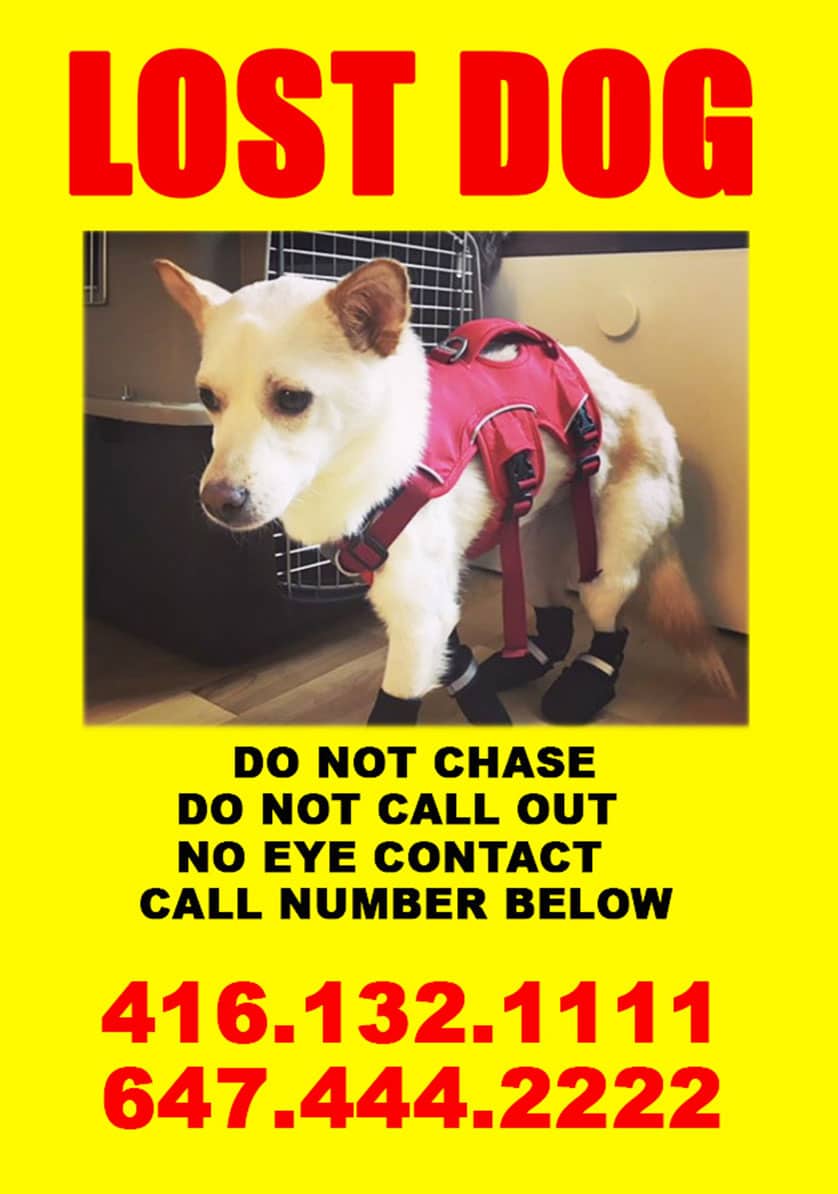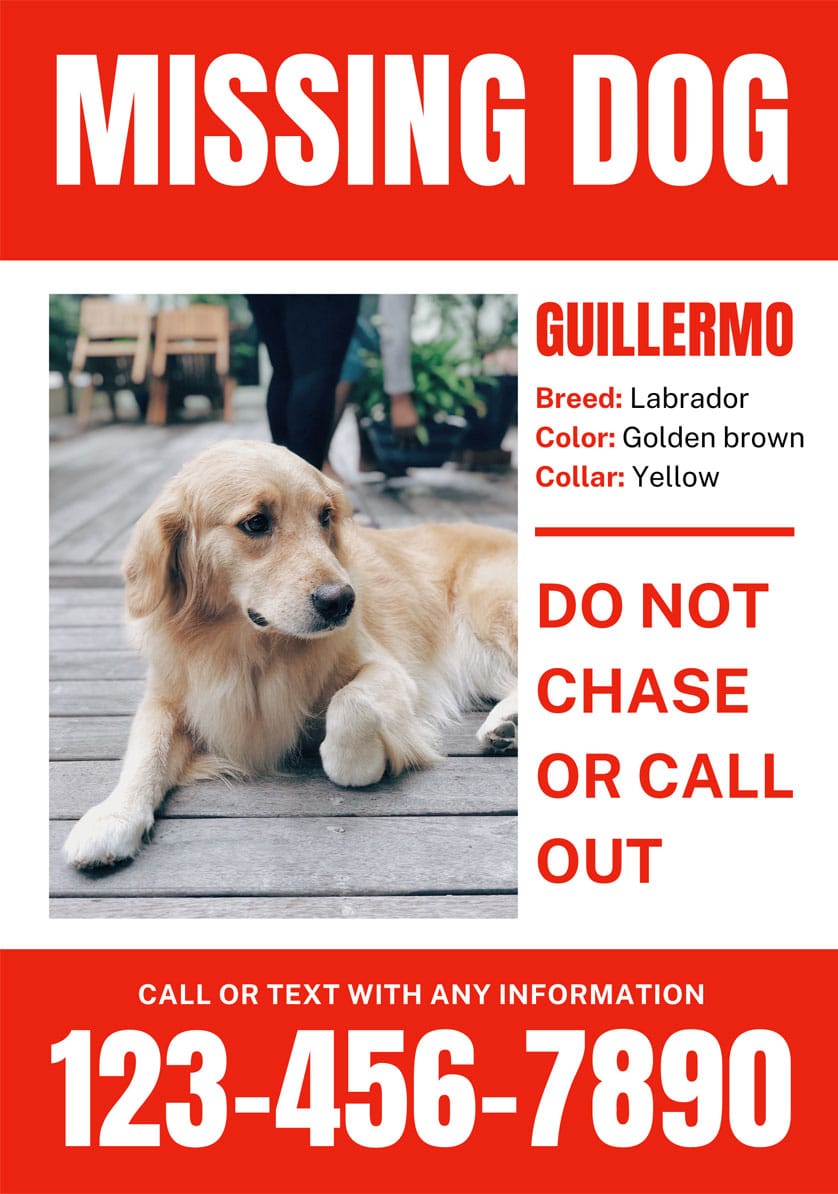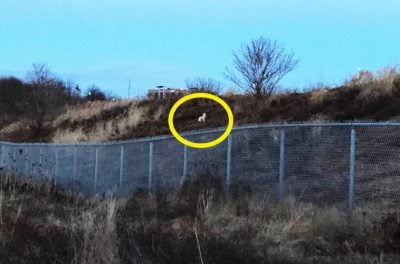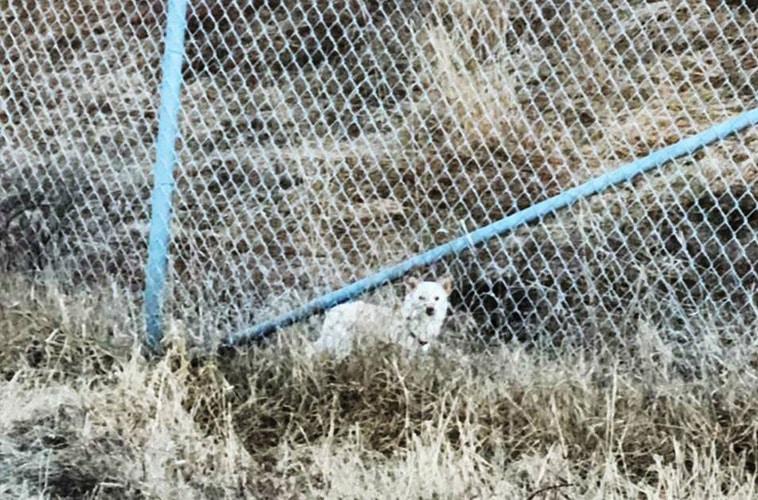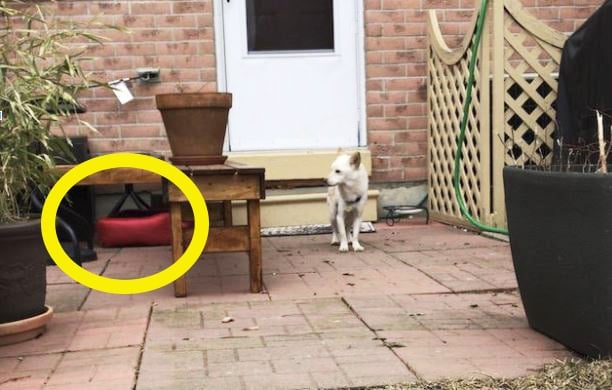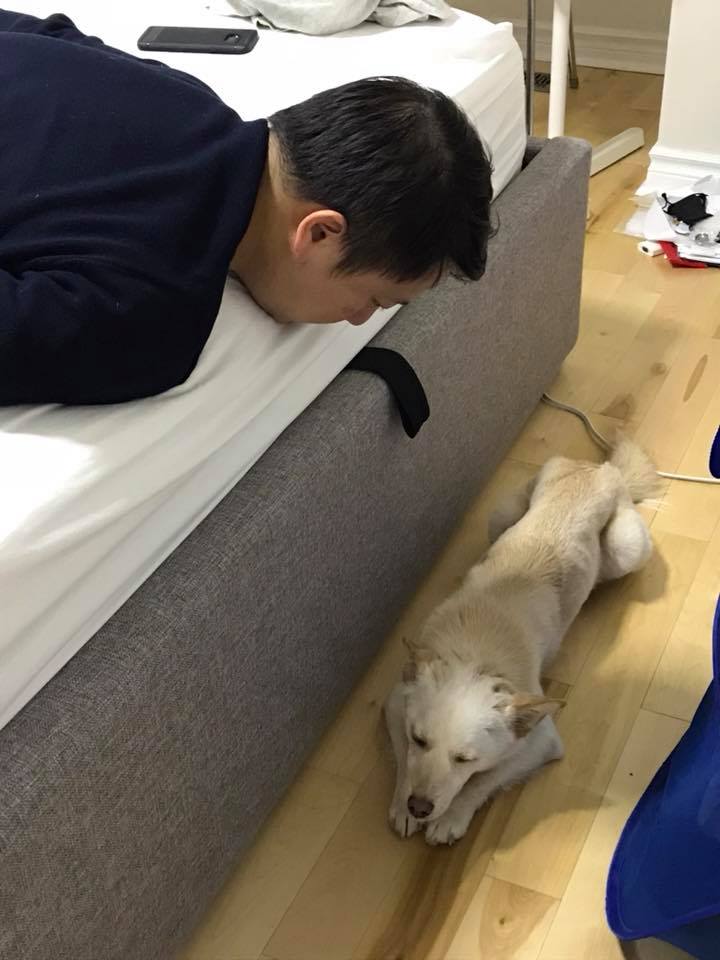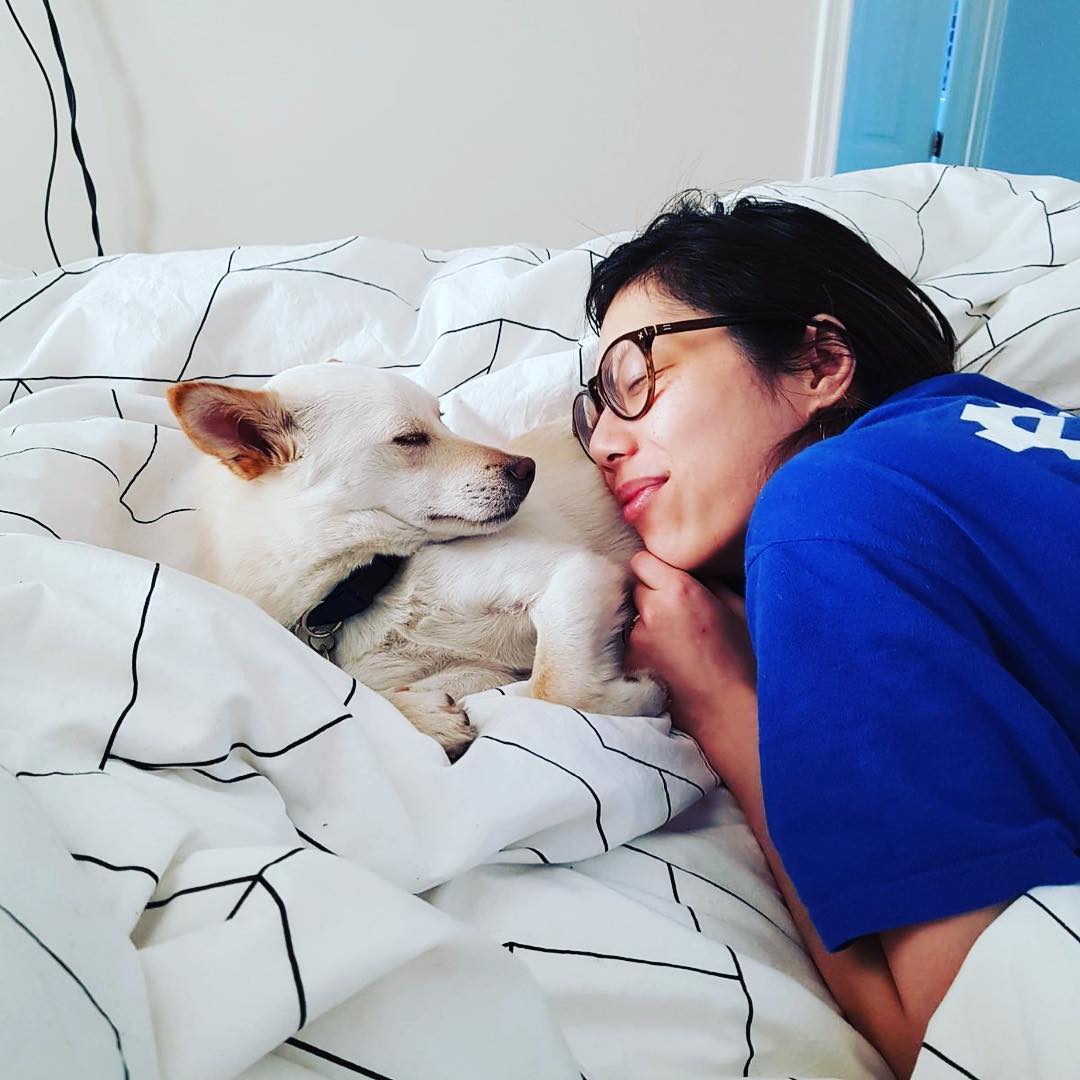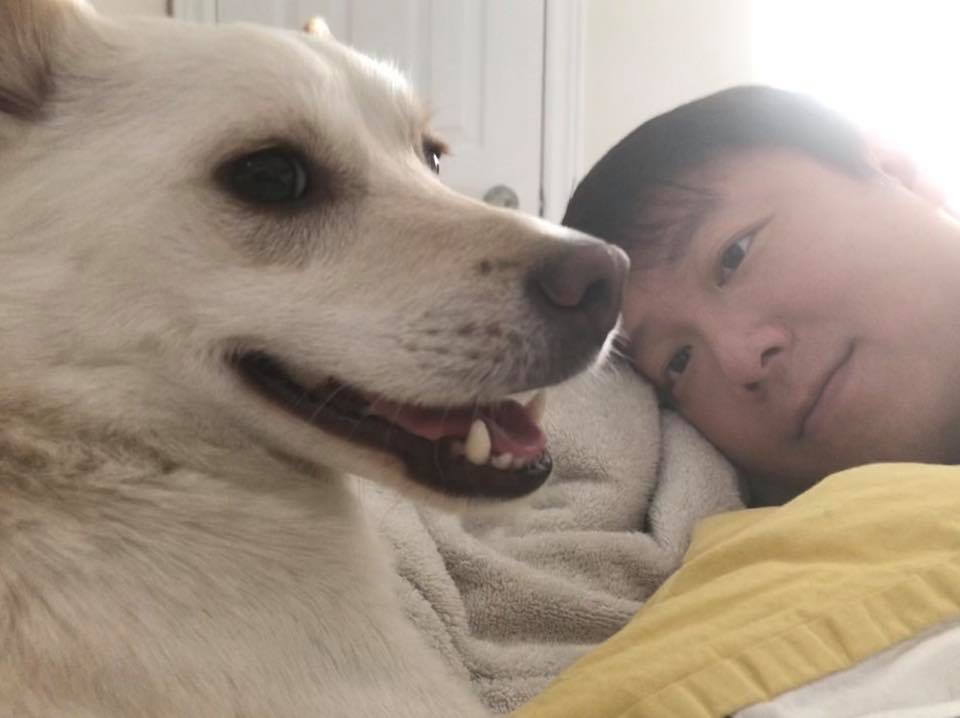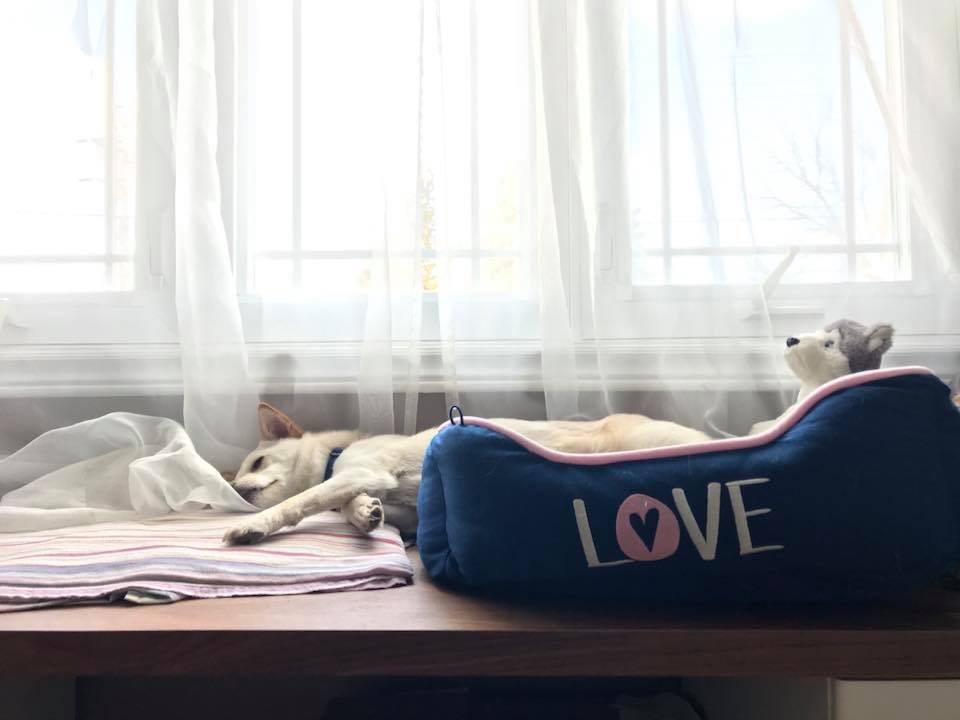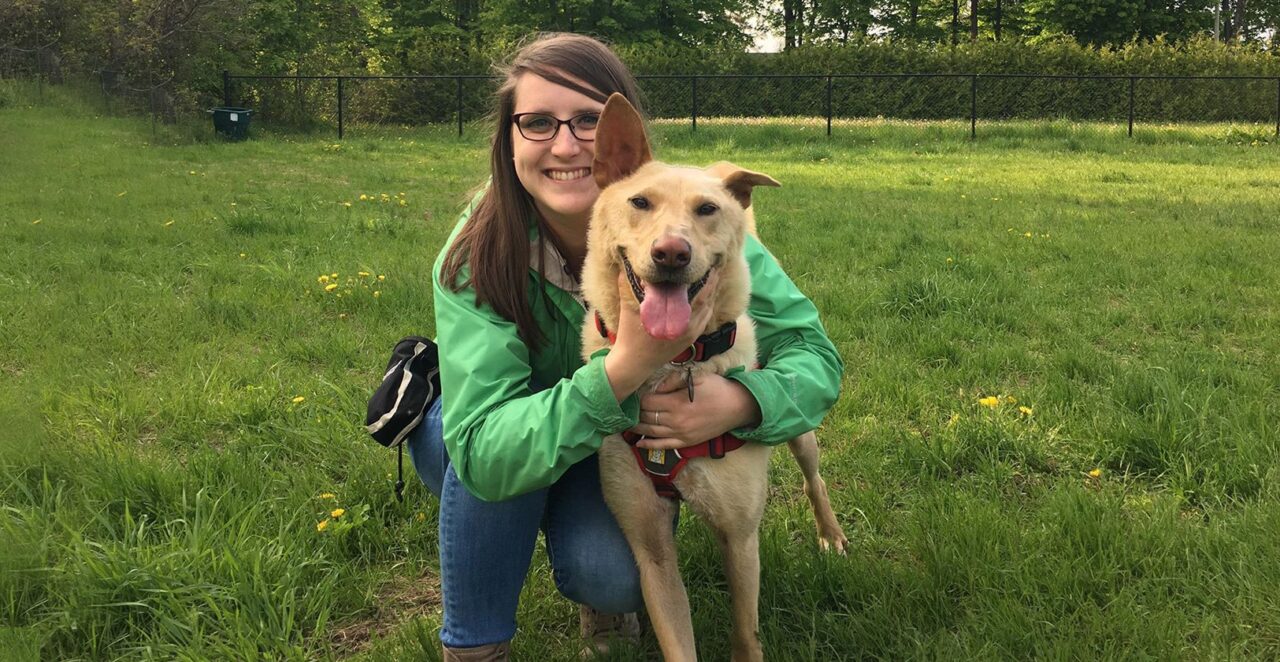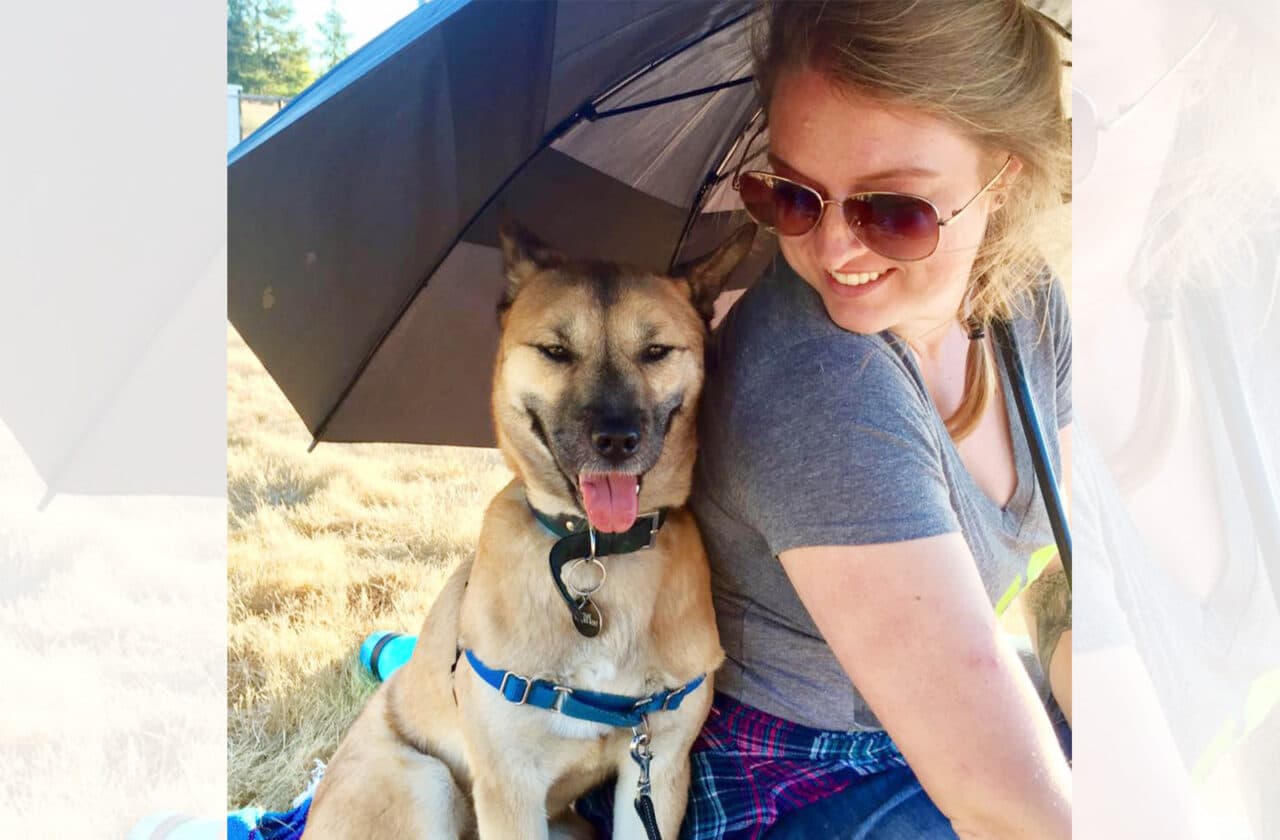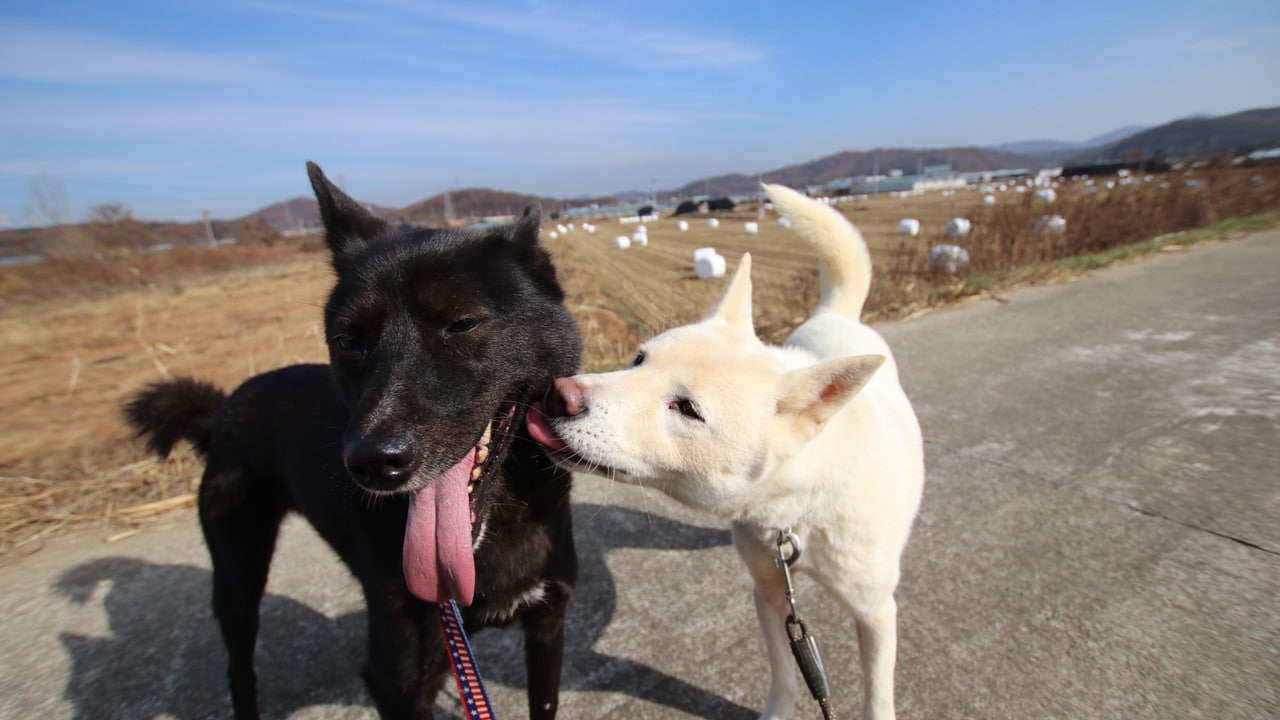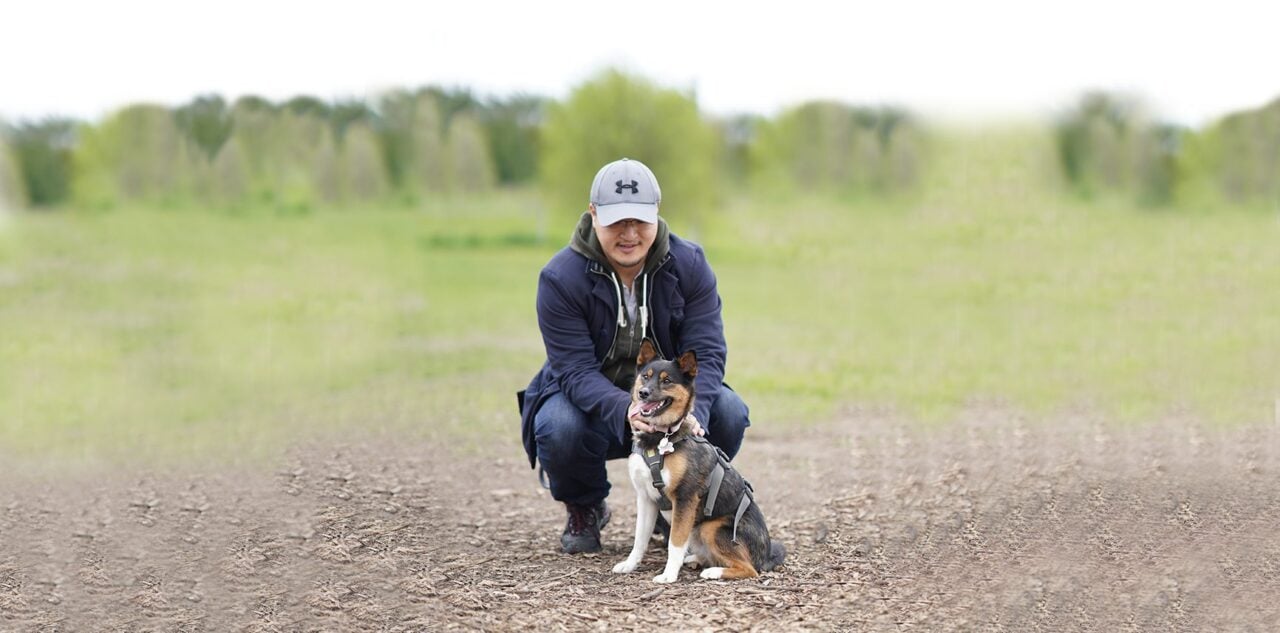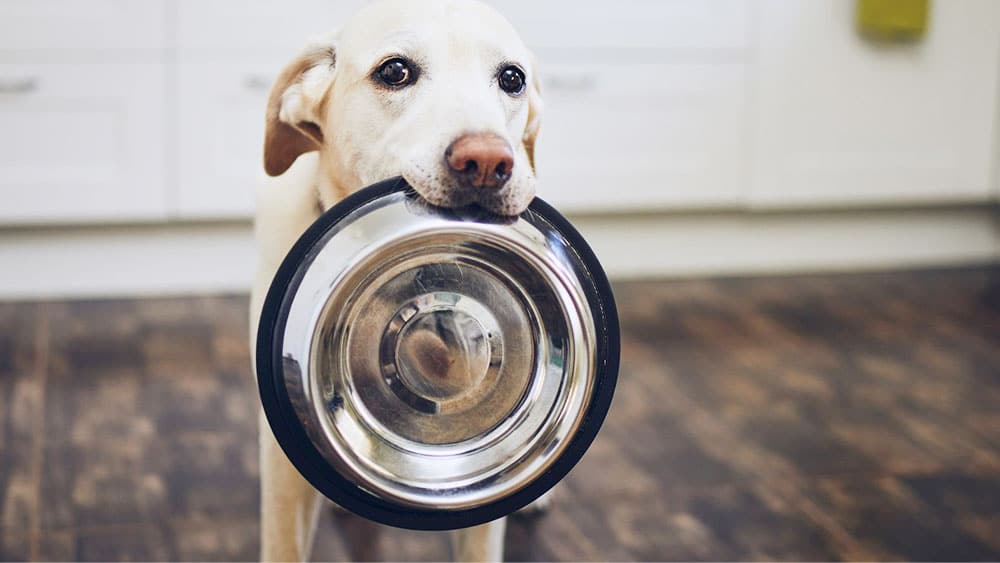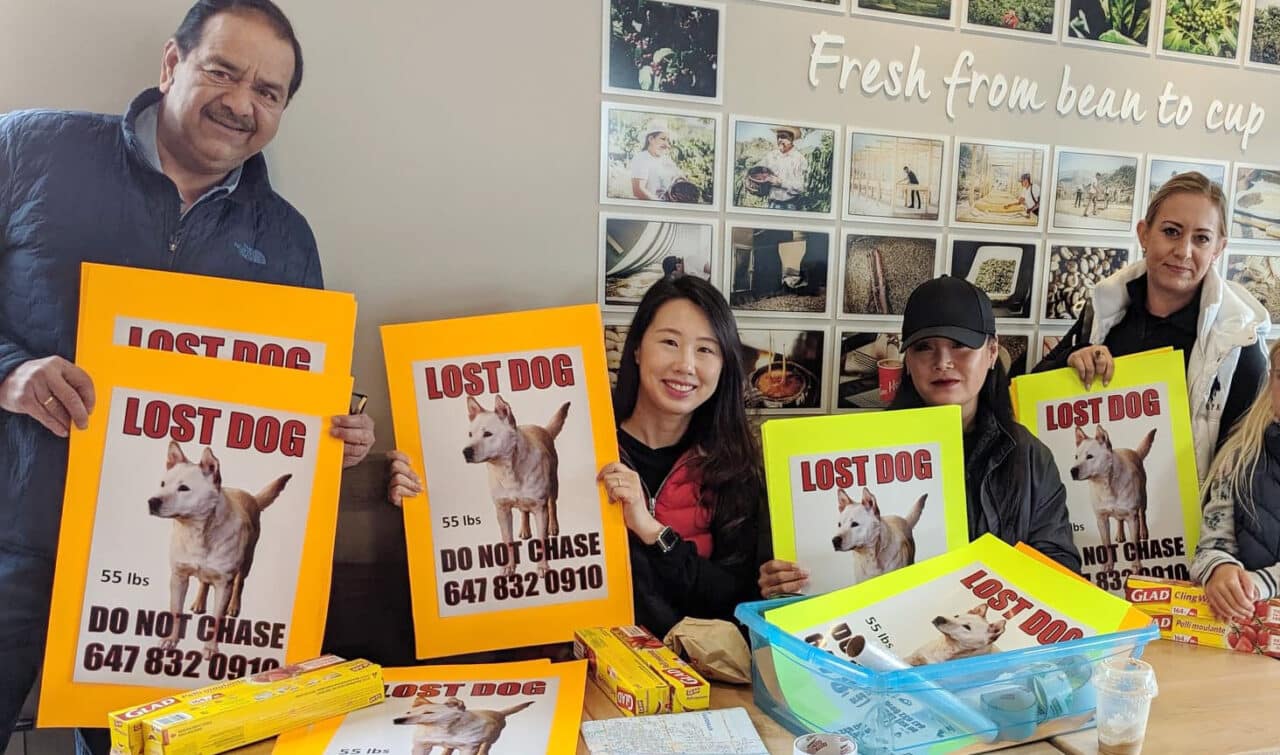Memoirs of a Lost Dog Part I: Juno’s Story
Guest article by Yuki Cheung
I remember seeing someone hysteric over a lost dog on Facebook a couple of weeks back. I sent over “my prayers” and went on with my day. “We’ll be very careful, that’s not going to happen to us. Not in my backyard!” I thought. Except it did happen. In my (friend’s) backyard.
We had adopted Juno (formerly Johnson) 2.5 weeks before the fiasco. Just to preface the rest of this post, let me reiterate the importance of taking time off with your new adoptee for the first couple of weeks. Should my fiancé and I not have pampered and cuddled and adored him for these first 2.5 weeks, we would have never been able to get Juno back.
Finding a Dog: What to Do When Your Dog is Lost
If you are reading this because you’ve just lost your pup, I understand you are in a frenzy right now. Let me cut to the chase and share some tips and insights I’ve gained over my experience. If you just want to read the warm fuzzy lost & found story, feel free to proceed to Part II (coming soon!).
Prevention: Bonding
Again, make sure your dog bonds with you as soon as possible. Accidents happen. Take at least two to four weeks off to help the dog get settled when you first receive it. Most dog losses happen within the first month, as they are unfamiliar with the new environment and are especially easy to be spooked. If it’s too early to walk it, at least stand outside with it from time to time near your home so that he gets familiar with the location (while potty training, for example). In our case, we had only spent 2.5 weeks with Juno and we lost him at a location he’d never been to before, very far from our home – the worst combination ever. There was no guarantee he’d even try to get back to us, which made the search so much harder.
Identifying Key Locations and Path
If you’ve lost your pup, think about your relationship with it and the key locations he could go to. The location you’ve lost it and your home are the two locations your dog would most likely try to go back to. Most dogs, when lost, will go back and forth between these places in an attempt to find you. On the second day onwards, it will be very hungry so it will likely show up near sources of food such as dumpsters and garbage cans. When you begin to receive calls about sightings, keep these points in mind and try to plot out the area and paths that your dog is seen roaming. Very likely it will come back to some locations it has roamed before. This will give you focus on your search.
Put Posters up – Lots of Them
We’ve received 2-3 calls a day about sightings from strangers. Also, everyone we saw on the streets was already aware of our lost pup! This was all thanks to the 400+ posters we’ve strategically plastered around the area. This worked surprisingly well in obtaining news of Juno.
1. Print in Color
If your dog was wearing something (harness, collar) at the time of disappearance, try to find a picture of it wearing exactly the same item. If not, find the most colorful picture possible – or add a colorful border. A colorful picture makes a huge difference in getting your posters seen. Juno was wearing a red harness when he ran off, so our picture had lots of bright red on it (with a very exasperated-looking Juno wearing Muttluks boots for the first time) – an eye-catcher for sure!
2. Include 2 Phone Numbers
Most people won’t bother to call back after a missed call. Even if you know you can’t make it on time, you want to catch ALL sightings so that you can have a clear sense of where your dog has been roaming. (see ”Identifying key locations and path” section above)
3. Do not Chase! Don’t Whistle or Call out!
Most people, with good intentions, will chase after a loose dog and try to grab it. This will only drive the dog to run further from the original location, making the search harder. When we lost Juno on a Sunday afternoon, many passersby jumped out of their cars in the middle of the street to “help”! Unfortunately, this was also what caused Juno to run 4km off and across to the other side of the 407 highway. (For details on what to do at a sighting, please read “Understand what to do when you see your dog” below)
4. Post at Strategic Locations with High Traffic
400 flyers go fast. You want to make sure you have enough to cover the entire area your pup could possibly be. Pedestrians are most likely to come across your pup and call so make sure to cover community mailboxes, park benches, lamp posts, and even shops… Most post offices, shops, and gas stations can’t hang posters up without their franchise or shop owner’s approval, but most are willing to leave the poster on their counter for the day.
Share the Workload
You want to leverage all the help you need as soon as possible, so focus on getting the word out immediately. Ask friends or volunteers to help put the posters up. For efficiency, divide the areas and assign them to each person accordingly. One method that has worked for us is to leave small stacks of posters in envelopes in our mailbox and let our helpers pick them up to distribute while we were out.
When Calls Come in, Ask the Caller for a Picture
If not, ask for the location of the sighting, the direction your pet went, whether it was still wearing its harness/collar (if any), and what it was doing at the time. If you are heading over immediately, ask them if they can stick around and keep your dog in sight.
Please Takedown Posters Once You’ve Found Your Dog
This really helps the next pet in need to get the attention they deserve. Yes, when you find your pooch you will be tired and relieved with no care in the world – but please be responsible and clean up the neighborhood that has so gracefully helped you in your search.
Ask for Help from Friends and Strangers
As new dog owners, we were absolutely floored by the amount of help and support we’ve received from friends and strangers alike. Interestingly, strangers were much more likely to help than non-dog-owning friends. It is imperative to get as much help as possible immediately, as you may not have many days if it’s the dead of Canadian winter or if there is dangerous wildlife nearby. For us, we were located near the edge of the city and there was apparently a pack of 20 coyotes nearby, so every night counted. Below is a list of Facebook groups and organizations that were incredibly helpful to us in Markham, Ontario. If you’re located elsewhere, search on Facebook or Google for similar groups in your city:
- Free Korean Dogs FKD is NOT a dog search group. I repeat it is NOT a search group! It is the adoption organization from which we adopted Juno. Upon learning about Juno’s disappearance, FKD’s founder EK cleared up her busy schedule of meetings and house visits to help us look for Juno. She is such a trooper! And an expert at anything dog-related. A million thanks to her. We have so much respect and admiration for her passion and dedication to her adopted babies.
- Team Chelsea Lost Pet Search Group This team ROCKS! They are located in the Durham area (east of GTA), but many volunteers came out all the way to Markham to help us search. They were absolutely phenomenal!! Their team is incredibly experienced – in fact, most advice I’ve listed here came from their group. They are extremely responsive – they even have someone on-call to track and share sightings in real time with the team. Special thanks to Patti who came on two consecutive days to help us search in the dead of winter! We can’t be more grateful!
- Lost & Found Pets of Ontario, Canada This team manages both lost and found pets in the entire province of Ontario. They will help share “lost dogs” Facebook posts, as well as “dogs found” ones. Be sure to check their Facebook group from time to time to make sure your pooch didn’t show up there. They also cross-post announcements from both Team Chelsea and Helping Lost Pets.
- Helping Lost Pets This group also have a corresponding Facebook group. They are the group the City of Toronto and the Toronto Humane Society refer to on their Lost and Found Pets pages. Once you submit a lost pet listing, they will review it and post it up on their Facebook page to get the word out. They also list found pets so be sure to take a look.
- Ontario SPCA and Humane Society (call 1-888-668-7722 ext. 319) Be sure to alert the nearby shelters to ensure they are on the lookout for your pup. Many dogs found are sent to the shelters so you want to make sure they have yours on file.
- City of Toronto Lost & Found Pets Since we didn’t lose Juno in the city of Toronto, we didn’t leverage Toronto’s services. Their web page does have some useful resources and links though so be sure to check it out.
- Bunz, buy & sell, housing, or other Facebook groups Although I did leverage these groups I did not find them particularly helpful. People commenting with “prayers” were actually distracting when you’re on the lookout for news. Some felt appropriate to give you advice on being a better dog parent “next time” – useful, I’m sure, but not when you’re in distress! If you do want to leverage these groups, just be respectful that your post is off-topic for their group’s intended purpose, and so they have every right to remove your post. Be nice, don’t engage in flame wars, and just ignore the haters!
- And finally – friends and personal social media! Ask friends to spread the message. Ask them to help you put posters up. Ask them to help look. It may be hard for some of us to ask friends to drive across town, brave the cold put hundreds of posters up, and look for a dog, but you just have to toughen your skin up as the first few days are crucial. At the very least, make sure to type up a Facebook post with pictures of your pooch on your own profile (not in a group as it won’t be shareable) with the security settings set to “Public”, and ask your friends and networks to share.
Set up a scent station and a safe space
Now I don’t know whether this actually worked for us, but I did roam the streets with my bedsheets on my shoulders like a crazy hobo – it can’t hurt, can it? Anyhow, if your dog got lost in an unfamiliar place such as a friend’s house, it may help to set up a scent station using your worn socks, clothes, and bedsheets. If your dog finds its way back to the house, it will also need a safe space to rest. We were told to leave the garage door partly open, with Juno’s bed inside and some of our smelly clothing on it. Water is fine too, but be careful about leaving food, especially at night time. In fact, we made this mistake on the first night and our friend spent all morning cleaning up the party some raccoons had in his garage.
Read Past Success Stories
Your search activities are pretty much done for the day once the sun goes down, but it does not mean there’s nothing more you can do. At night, research and read some success stories. Not only it can boost your morale, but it will also give you a good sense of what you need to do if you do come across your pup. This leads to the next point.
Understand What to Do When You See Your Dog
- Before you even start your search, be sure to understand what you need to do if you do come across your dog. Build a mental scene of how you will act. When a sighting happens, the first reaction is usually to jump on the poor, terrified pup! This almost never works. Your dog will not recognize you and will likely flee before you can count to three. When you see your dog, plan to.
- Make sure to have a leash on hand. Slip-on leashes work the best. If you know your dog is still wearing its collar, a regular leash is okay.
- Make sure you have treats on hand. Smelly food like hot dogs, bacon, and grilled chicken.
- Keep your distance and make sure your pup does not get spooked by onlookers.
- Do NOT share eye contact. Eye contact feels threatening to dogs, so as difficult as it is, look sideways. Keep your pup in your peripheral vision.
- Communicate with helpers through the phone. Do not yell out. If your friends are beyond hearing distance, call them on your phone and speak softly to avoid scaring your dog.
- Have people block any escape route. OK guys, as tempting as it seems do NOT try to surround the dog and then have everyone pounce on it at the same time! If cartoons can be of any indication, this method almost never works. Simply have some people be on standby near exit points in case it does try to flee.
- Crouch or squat down. You need to get your pup to calm down so it can let itself be caught. Make yourself smaller to appear less threatening. Many have also suggested sitting down, but I didn’t feel sitting would have allowed me to react quickly enough should Juno have darted. Squatting is best in my humble Asian opinion but I was cramping up, so I opted to crouch on my knees.
- Talk in a soothing voice or sing. Talk softly to your pup in your usual doggy talk voice to build familiarity. If it’s too stressful to keep uttering nonsense, think of a song you often sing at home and hum it until it shows signs of recognizing you.
- Offer treats… or clothing. Once your pup has calmed down a little, gently toss or hold out treats. Alternatively, toss over some of your worn clothes for it to sniff at (I heard this works – not my own experience!).
- Wait or move slowly. Let your pup come to you. If it doesn’t bulge, move very slowly and read his body language carefully. Reach out and let it smell you. Slowly move to petting it if it allows you.
- Leash up before grabbing. All rescue stories end differently. But I would say, try to leash your pup up before attempting to pick it up. You’ll have to keep up with its body language and act accordingly.
Finally, Go out and Search!
In my experience, it wasn’t so useful to roam about the area on foot myself. We had a huge search team and I was never the one to come across my pup! And by the time I rush back to my car and drive over to the sighting location, it was already too late. I felt like having the dog owner take the car and the helpers spread out and search on foot would have been a more strategic approach. Of course, this does not apply to all cases – be sure to think about what works for your case and set a plan accordingly. The first day or two may involve randomly roaming about the area, but by the second and third days, you should have a better sense of what works and what doesn’t. And if it takes longer – don’t despair! Pace yourself to avoid burnout. Keep your hopes up and keep looking!
Best of luck and hope my experience can be of help to anyone going through difficult times!
Subscribe for Updates
Get our dogs in your inbox once a month, along with our latest news and events. We never send spam, and you can opt out at any time.
